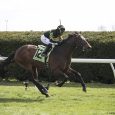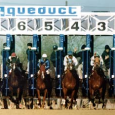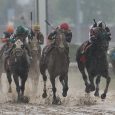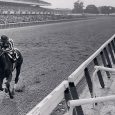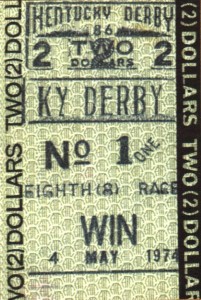 I’m asked all the time if I think it’s possible to make a living at the racetrack and whether or not I believe I can do it. My answer to both questions is “yes,” provided that “make a living” is assigned a realistic numerical value (somewhere between $40K and $100K for those with a modest starting bankroll).
I’m asked all the time if I think it’s possible to make a living at the racetrack and whether or not I believe I can do it. My answer to both questions is “yes,” provided that “make a living” is assigned a realistic numerical value (somewhere between $40K and $100K for those with a modest starting bankroll).
However, I hold this optimistic view only for those who thoroughly understand the mathematics of the game. For example: Ask any horseplayer what is more important, a high win percentage or a high return on investment (ROI), and the answer will invariably be the latter, yet both are crucial to making a living at the racetrack.
Consistent profits are derived from betting overlays that win. It does no good to have a 20-1 shot that runs a game second (which was made clear to me for the 2,387th time when Commissioner got nipped at the wire by Tonalist in the 2014 Belmont Stakes).
“But Derek, but Derek,” I can hear some of you protesting, “you clearly bet that race wrong. If you like a 20-1 shot, you should always bet it to place… or play the exacta… or the trifecta… or…”
Look, I get it. After a near-miss, everybody thinks that they would have won if only.
“If only I’d have bet to place!”
“If only I’d have boxed the exacta!”
“If only I’d have taken a shower this morning!”
OK, you can ignore that last one. A sudden gust of wind through my open office window has caused me to regret my decision to write first and wash second. The point is this: Regardless of one’s betting strategy, he/she is going to experience near-misses and agonizing defeats. Playing the “woulda, coulda, shoulda” game is not going to change this — or help one maintain their sanity. In fact, those seeking to make an income playing the races should expect these excruciating losses just like they expect the occasional exhilarating wins.
And speaking of winning, I cannot stress the importance of a reasonable winning percentage enough.
While it is popular to believe that the best way to beat the races is via a parade of 15-1 shots or $500 exactas, the truth is such a strategy is likely to produce an aneurism before it produces next month’s rent.
While I — like many others, I’m sure — immensely enjoyed reading Andrew Beyer’s “My $50,000 Year at the Races,” I was personally horrified by the way he achieved his success. At one point in the book, Beyer admits to being down $15K-$20K. If that were me, I’d also be down a family, not to mention bald and suffering from nervous tics and incontinence.
The fact is one’s advantage over the game, as defined by the famous Kelly Criterion (a betting optimization method postulated by John L. Kelly in the late 1950s), is a function of one’s strike rate and his/her average winning odds.
ADVANTAGE = WIN RATE – LOSS RATE ÷ AVERAGE WINNING ODDS
Hence, it should come as no surprise that both are important. But just in case you’re the stubborn type, let’s look at two mythical bettors — Clarence Chalkeater and Lorena Longshot. Based on a sample of 1,000 races (the more, the better for assessing one’s competence, by the way), Clarence and Lorena produced the following statistics:
CLARENCE CHALKEATER
Bets: 1,000
Winners: 400
Win Rate: 40.0%
Return: $2,200
ROI: +10.00%
Avg. Winning Odds: 1.75-1
Kelly Advantage: 5.7% (0.4 – 0.6 ÷ 1.75)
LORENA LONGSHOT
Bets: 1,000
Winners: 100
Win Rate: 10.0%
Return: $2,400
ROI: +20.00%
Avg. Winning Odds: 11.00-1
Kelly Advantage: 1.8% (0.1 – 0.9 ÷ 11.00)
Observe that although Lorena’s ROI is double that of Clarence’s, Clarence has a bigger advantage over the game — by a substantial margin.
What this means — in dollars and cents — is huge. To demonstrate, I ran 40 random 1,000-race simulations based on the stats above. Each test used the Kelly advantages derived above for both bettors. Lorena’s results are on the left and Clarence’s are on the right:

Mr. Chalkeater accumulated an average bankroll of $61,045.79 after 10,000 races, handily outpacing the $32,446.16 compiled by Ms. Longshot — despite the fact that Lorena’s ROI was higher than projected (24.29 percent vs. 20 percent) while Clarence’s ROI was lower than expected (9.90 percent vs. 10 percent).
Notice, too, what happens when one exceeds their Kelly advantage: In the trials that Lorena bet 5.7 percent of her capital instead of the recommended 1.8 percent, she went broke more often than Toni Braxton, failing to breathe again eight times out of 10.
Of course, I know what many of you are thinking: Lorena should just bet a set amount in every race. I agree, that works great… if one has a large enough bankroll to sustain the inevitable losing streaks and rough patches. And if, in fact, one does have such a bankroll, it begs the question: Why bet at all? Why not put one’s money in stocks, bonds or other investments that don’t feature a 17 percent takeout… or breakage… or the potential to go to zero with the bob of a head?
The bottom line is this: To make a living at the track one must attempt to optimize their handicapping and wagering techniques. There’s a reason that even those who have managed to generate income from the game generally have a short betting life. Without proper planning and a comprehensive understanding of the mathematics behind the game, one is destined to be a casual player.

